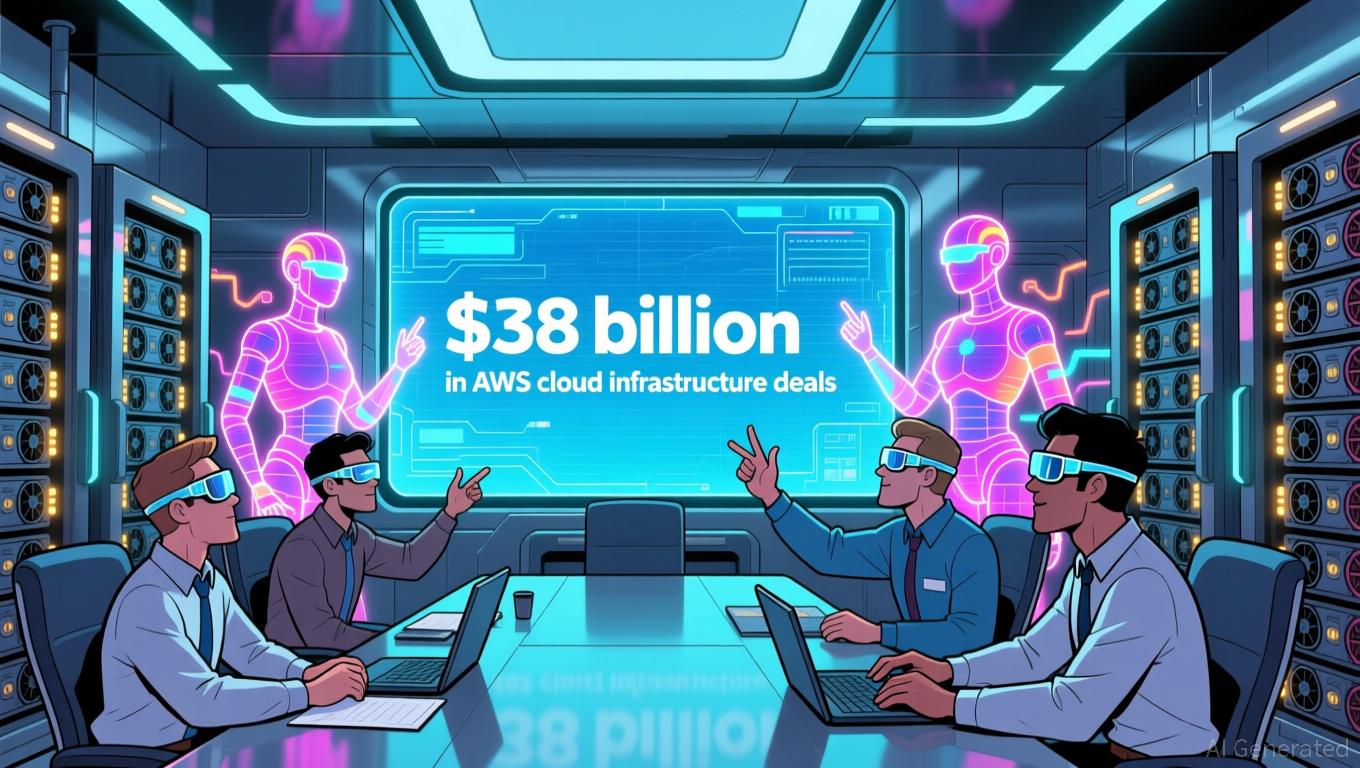OpenAI's $1.4 Trillion AI Risk: Will Altman's Refusal of a Bailout Succeed?
- OpenAI CEO Sam Altman rejected "too big to fail" claims, asserting the AI firm rejects government bailouts and state intervention in business decisions. - A $38B AWS partnership provides OpenAI with 100K+ Nvidia GPUs and millions of CPUs, diversifying cloud reliance after a $500B PBC restructuring with Microsoft . - Altman projects $20B annual revenue by year-end and $100B+ by 2030, despite $1.4T infrastructure spending plans raising sustainability concerns among analysts. - Political scrutiny grows as F
Sam Altman, the head of OpenAI, has strongly dismissed suggestions that his organization is "too big to fail." He stressed that OpenAI is not seeking any government backing or taxpayer-funded rescues to support its significant infrastructure investments. Through several public comments and a comprehensive post on X, Altman reaffirmed OpenAI’s opposition to government involvement in the industry, stating, "We do not believe governments should decide which companies succeed or fail, nor should taxpayers be responsible for rescuing businesses that make poor choices," as reported by Business Insider.
These statements follow OpenAI’s recent $38 billion collaboration with

Altman’s remarks reflect broader worries about whether OpenAI’s rapid growth is financially sustainable. The company has pledged to spend $1.4 trillion on computing infrastructure over the next eight years, sparking doubts about its ability to generate enough income. Nevertheless, Altman remains optimistic about OpenAI’s future, forecasting an annual revenue run rate of $20 billion by the end of the year, with the possibility of reaching hundreds of billions by 2030. He indicated that enterprise solutions, consumer hardware, and robotics will be key revenue drivers, as he explained to the media and in public statements.
This discussion has attracted political attention, especially from Florida Governor Ron DeSantis, who criticized the "too big to fail" label and pointed out that OpenAI has not yet achieved profitability. DeSantis also noted the company’s strong connections with major tech firms like Microsoft and Amazon, cautioning against excessive concentration of power in the AI industry, according to Benzinga.
Meanwhile, David Sacks, the White House’s AI advisor, made it clear that federal bailouts for AI companies are not being considered, echoing Altman’s stance against government intervention, as reported by Yahoo Finance.Experts in the market remain split. While the AWS deal has lifted Amazon’s share price and strengthened AWS’s position in the AI infrastructure sector, some warn that the surge in AI spending could be unsustainable. OpenAI’s projected costs—expected to reach $1 trillion by 2030—currently exceed its revenue, raising doubts about its long-term prospects, as Coincodex notes. Nvidia, which stands to benefit greatly from the agreement, continues to see high demand for its chips, but the growing energy requirements of AI pose significant sustainability and resource challenges, according to WebProNews.
OpenAI’s shift to a PBC model and its adoption of a multi-cloud strategy highlight its efforts to balance innovation with fiscal discipline. The company’s future will depend on its ability to manage regulatory pressures, attract private funding, and meet its revenue targets—without turning to government assistance.
Disclaimer: The content of this article solely reflects the author's opinion and does not represent the platform in any capacity. This article is not intended to serve as a reference for making investment decisions.
You may also like
Ethereum Updates Today: SharpLink's ETH Sell-Off Fuels NAV Recovery Theories as Crypto Market Declines
- SharpLink Gaming sold 4,364 ETH ($14.47M) to OKX, triggering an 8% stock drop and 42% monthly loss amid broader crypto market declines. - Its mNAV of 0.82 shows a 18% discount to crypto holdings, raising speculation about NAV stabilization or buyback strategies. - Ethereum's $3,097 three-month low worsened unrealized losses for firms like BitMine, with combined 4.17M ETH ($14.5B) but mNAVs below 1. - Staking advantages for Ethereum firms contrast with Bitcoin-centric peers, as SharpLink's $240M unrealize

Intuitive Machines Purchases Lanteris Amidst Crypto Industry’s Struggles with Penalties and Security Breaches
- Intuitive Machines plans to acquire Lanteris for $800M, merging satellite production with in-space logistics to create a $850M annual revenue entity. - Coinbase Europe faces a €21.5M fine for AML compliance failures, while DWF Labs reportedly lost $44M in a 2022 North Korea-linked hack. - A crypto whale opened $140M leveraged short positions against Bitcoin/XRP, reflecting bearish sentiment amid regulatory and security challenges. - The acquisition aims to leverage Lanteris' production reliability for In
HYPE Token Experiences Rapid Growth: Are We Seeing a Temporary Hype or a Genuine Innovation?
- HYPE token surged 64.8% in 2025, driven by institutional backing, tech innovation, and speculative demand. - Paradigm, holding 19.14M HYPE ($763M), wields governance influence but risks whale-driven market distortion. - Hyperliquid's ecosystem includes HyperEVM, staking, and $400M buybacks, creating a flywheel effect for token value. - Partnerships with Phantom Perps and corporate treasuries (e.g., Eyenovia) expand adoption, while HIP-3 decentralizes market creation. - Skepticism persists due to meme coi

IREN's $9.7B Artificial Intelligence Agreement and Profit Jump Fail to Prevent 12% Share Decline
- IREN shares fell 12.37% despite $9.7B Microsoft AI cloud contract and record $240. 3M Q1 revenue, driven by Bitcoin-to-AI pivot. - $384.6M net income turnaround and $662.7M EBITDA highlight transition to vertically integrated AI infrastructure with 3GW renewable-powered data centers. - 140,000 GPU deployment and $1.8B cash reserves contrast with investor concerns over $1B convertible notes, execution risks, and contract dependency. - Microsoft's 10% capacity access with 20% prepayment ($1.9B annualized)
